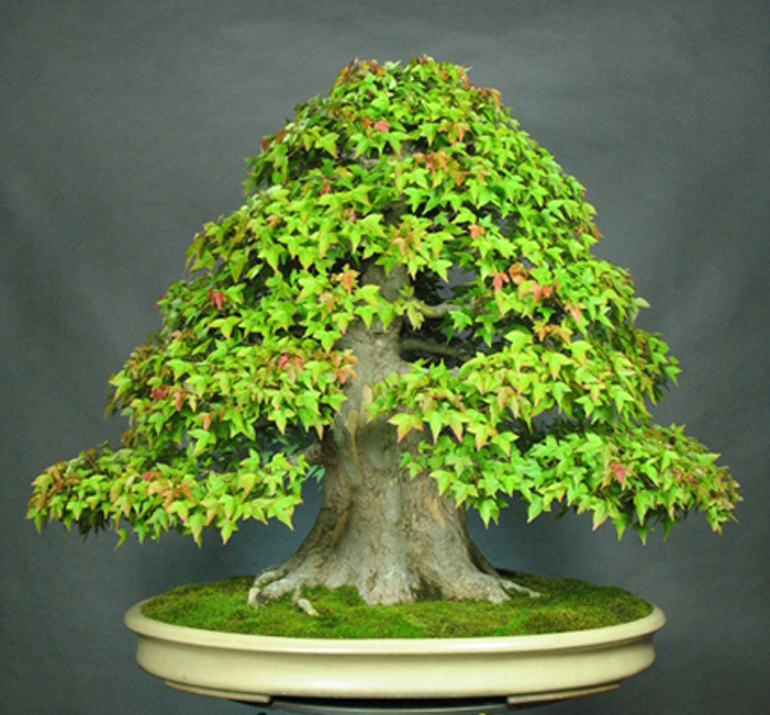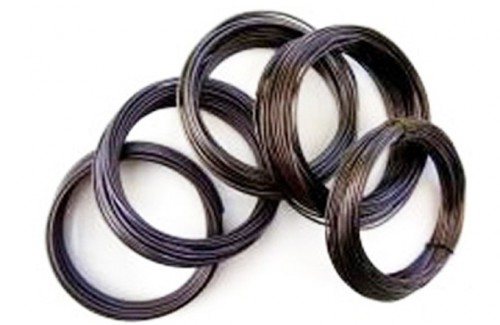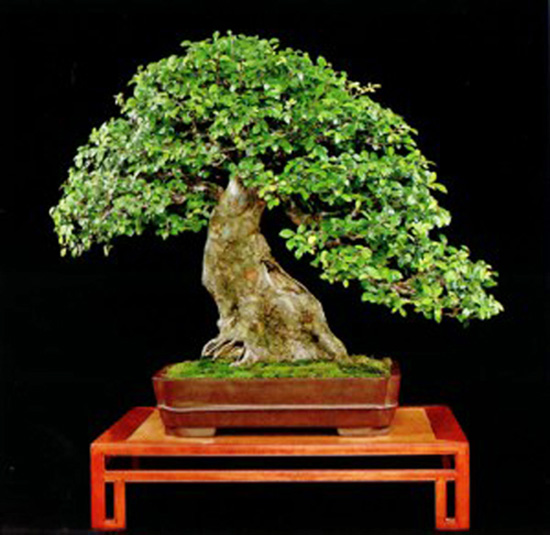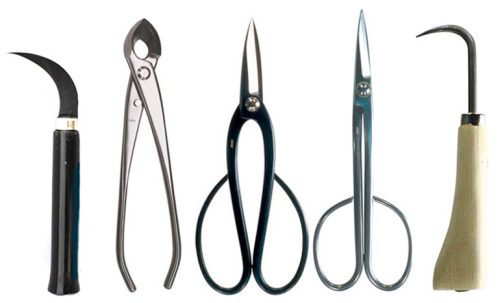
This massive Trident maple most likely started in a field somewhere and was allowed to grow quite tall (the fastest way to thicken the trunk) before it was cut back. This first cut was the beginning of clip and grow styling (see below). The owner/artist of this outstanding bonsai is German Gomez.
Most large Trident maples and many other deciduous trees are started in the field and developed using the clip and grow technique. The result is usually a heavy trunked tree with gentle curves, often in a more or less S shape. You can see this basic shape in the Trident maple in old field growing post here on Bark. A variation of this S curve also shows up in the pine that is shown in the same post, though it was created by other means (trimming and wiring), as pines and other conifers don’t usually take to the clip and grow technique.
One more day of vacation, so we’ve taken a shortcut. The photos and most of the text in this post originally appeared here in November, 2015
Continued below…
These simple illustrations of the clip and grow technique are from a website called The Bonsai Primer. The left image shows the first cut, the next one shows the second cut, and so forth.
There was a day before wiring became the norm, when most non -conifer bonsai were trained primarily by clip and grow. Some purists still eschew wire in allegiance to the old ways, but their numbers are dwindling; wiring just offers too many advantages.
Speaking of Wiring…
Yoshiaki Japanese Aluminum Bonsai Wire
Now 40% off list prices

Aluminum wire is much less expensive and easier to use than Copper wire and Yoshiaki Japanese Aluminum Wire is stiffer
and holds better than other Aluminum Bonsai Wire
It also has the more traditional and preferred copper/brown color
–

You can see the large scar from the first cut on this powerful old Chinese elm (Ulmus parviflora) . If you follow the trunk up a ways, you can see the change of direction where the second cut took place, though you can't see a scar from this view. This tree appears in the 1st U.S. National Bonsai Exhibition Album (out of print but 4 & 5 are still available). It was started from a large collected tree in China. The owner/artist is Melvyn Goldstein.
One more day of vacation, so we’ve taken a shortcut. This post originally appeared here in November, 2015
NEW KOYO BONSAI TOOL SPECIAL
All Koyo Japanese Tools Now Deeply Discounted Includes our Koyo Masters Grade Tools
Includes our Koyo Masters Grade Tools
–
FREE Shipping on Continental U.S. Orders 75.00+
(only if you choose Free Shipping when you check out)
–